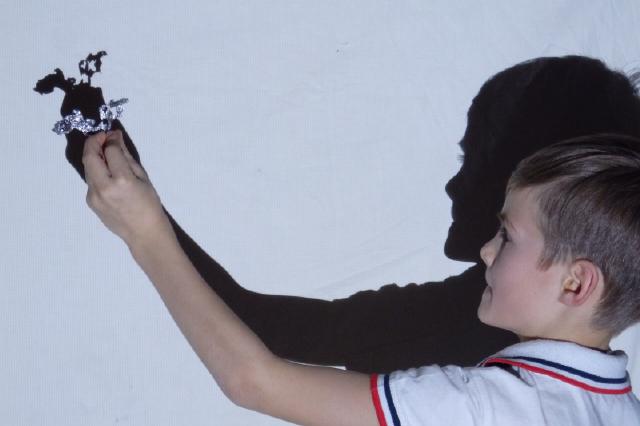The shape of things to come in 2016
This scene of shadow puppetry or
varju/teater, as it’s known in Estonian, was played out on New Year’s Eve in the Kassi/saba (“Cat’s tail”) neighbourhood of Tallinn. It was part of a social event, but not a performance... The shadow of the figure first-grader Hugo is holding up hopefully helped him to identify what shape the figure resembles. Everyone was clutching a figure, a silver-coloured figure made of lead (
tina) which they had just had a hand in forming. Estonians call this tradition
ÕNNE/VALAMINE – pouring luck or [/i]tina/valamine[/i] – pouring lead.
Turns out it has a very fancy name: molybdomancy – a technique of divination or fortune-telling (
ennustamine) using molten metal, where typically molten lead (
tina) or tin (
plekk) is dropped into water. Estonians were introduced to this tradition via Germans, who also practice this New Year’s Eve tradition and call it
Bleigießen, which, as in Estonian, literally translates to “lead pouring”.
“The method was invented in ancient Greece and today is a common New Year tradition in the Nordic countries, Germany, Switzerland and Austria. Classically, tin is melted on a stove and poured into a bucket of cold water. The resulting shape is either directly interpreted as an omen for the future, or is rotated in candlelight (or any projected light) to create shadows, whose shapes are then interpreted. Molten lead is also poured into water in a ritual in Turkey, used when people have been affected by the evil eye, and a similar traditional practice is used in Bosnia and Herzegovina. In Finland, shops sell ladles and small bullion in the shape of a horseshoe for this express purpose. Originally made from tin, now they are made from cheaper low-melting alloys based on lead.” (Source: Wikipedia)
The lead we melted on a metal ladle (
kulp) on the stove-top also came as part of a store-bought set, complete with
kulp and
hobu/raua (horseshoe) shaped individual pieces of lead, one for every person.
Not everyone in Estonia does this every year, but most people have during their lifetime. For most of the kids at the given get-together, this was their first time "pouring luck" and they were very excited about the process and following interpretation.
It was very important (and natural) for Estonians who escaped their homeland in 1944 to keep this tradition alive in other lands, making a special effort to get and assemble what was necessary for the ritual. Ask your senior relatives and friends to reminisce about how they poured luck in Estonia or abroad. And if you haven’t ever done so, or want to re-kindle an ancient practice revered by your not-so-ancient loved ones, consider
õnne/valamine on the last evening of the year. The ensuing shapes will intrigue you.
Riina Kindlam, Tallinn

